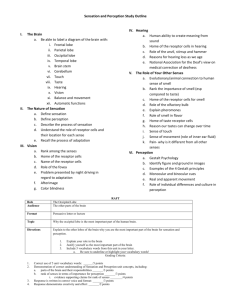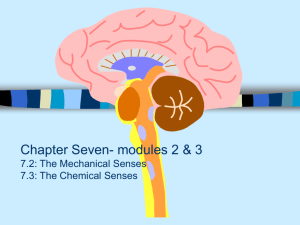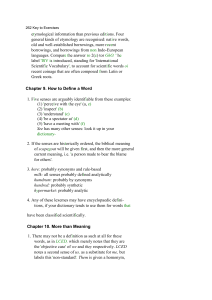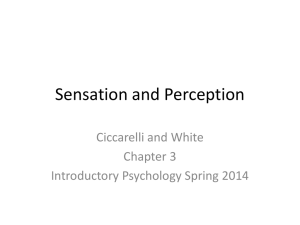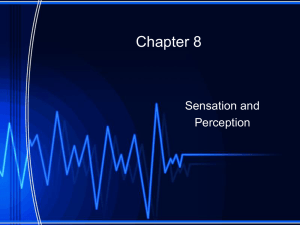Final_Exam_Study_Guide_AP3
advertisement
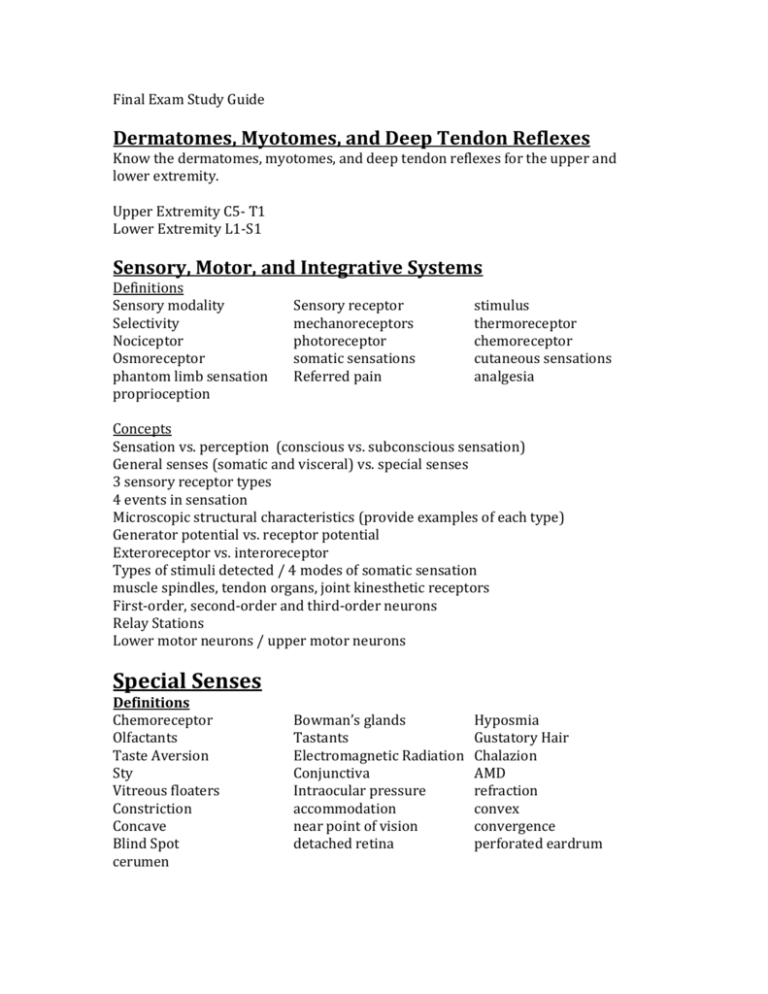
Final Exam Study Guide Dermatomes, Myotomes, and Deep Tendon Reflexes Know the dermatomes, myotomes, and deep tendon reflexes for the upper and lower extremity. Upper Extremity C5- T1 Lower Extremity L1-S1 Sensory, Motor, and Integrative Systems Definitions Sensory modality Selectivity Nociceptor Osmoreceptor phantom limb sensation proprioception Sensory receptor mechanoreceptors photoreceptor somatic sensations Referred pain stimulus thermoreceptor chemoreceptor cutaneous sensations analgesia Concepts Sensation vs. perception (conscious vs. subconscious sensation) General senses (somatic and visceral) vs. special senses 3 sensory receptor types 4 events in sensation Microscopic structural characteristics (provide examples of each type) Generator potential vs. receptor potential Exteroreceptor vs. interoreceptor Types of stimuli detected / 4 modes of somatic sensation muscle spindles, tendon organs, joint kinesthetic receptors First-order, second-order and third-order neurons Relay Stations Lower motor neurons / upper motor neurons Special Senses Definitions Chemoreceptor Olfactants Taste Aversion Sty Vitreous floaters Constriction Concave Blind Spot cerumen Bowman’s glands Tastants Electromagnetic Radiation Conjunctiva Intraocular pressure accommodation near point of vision detached retina Hyposmia Gustatory Hair Chalazion AMD refraction convex convergence perforated eardrum Concepts Which special senses are chemical senses? Know the three kinds of cells in olfactory receptors Know the innervation of the olfactory glands Understand the concept of threshold and adaptation in relation to the special senses Know the olfactory pathway – from receptors to cerebral cortex What are the five tastes that can be distinguished? Know the kinds of taste buds and where they are located / what is unique about the filiform papillae? Know the 3 kinds of epithelial cells with each taste bud Know the gustatory pathway from receptor to cerebral cortex Know the location and function of the accessory structures of the eye (palpebrae, lacimal caruncle, conjunctiva, meibomian glands, sebaceous ciliary glands) Know the parts of the lacrimal apparatus and the drainage pattern Know the innervation of the extrinsic eye muscles Know the three layers of the eyeball Be able to identify and tell the function of the following structures: cornea, sclera, choroid, ciliary body, zonular fibers, ciliary muscle, iris, pupil, circular muscles, radial muscle, retina, photoreceptors (rods and cones), optic disc, optic nerve, lens, vitreous body, Know the major refraction abnormalities from your lecture notes Know basic rod and cone structure and location Light and dark adaptation Know the visual pathway from photoreceptor to cortex Know the major parts of the external ear and their function (external auditory canal, tympanic membrane) Know the major parts of the middle ear and their function (auditory ossicles, oval window, Eustachian tube) Know the major parts of the inner ear and their function (semicircular canals, cochlea, hair cells) Know the auditory pathway to the cerebral cortex



